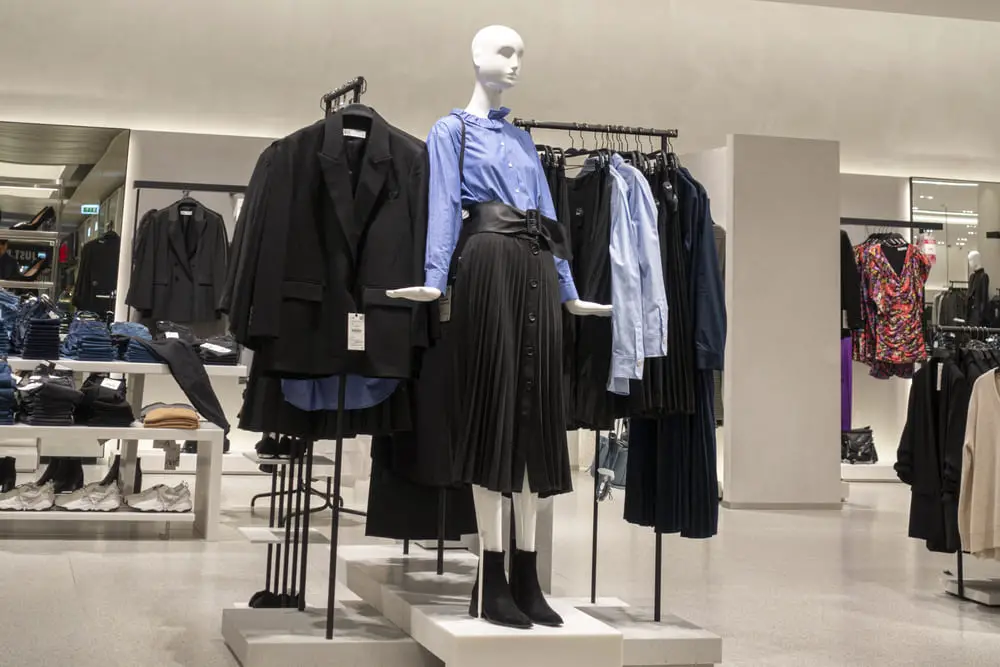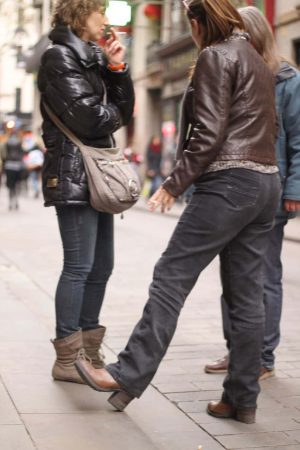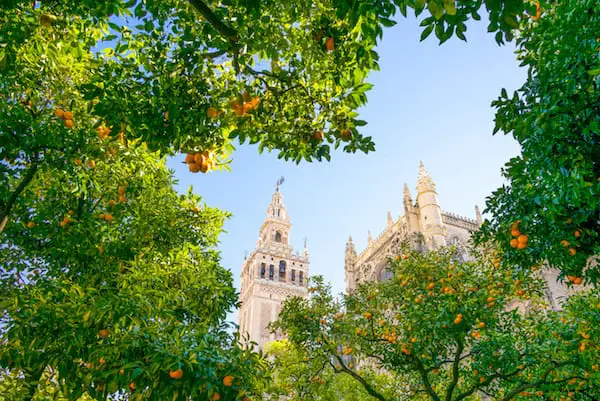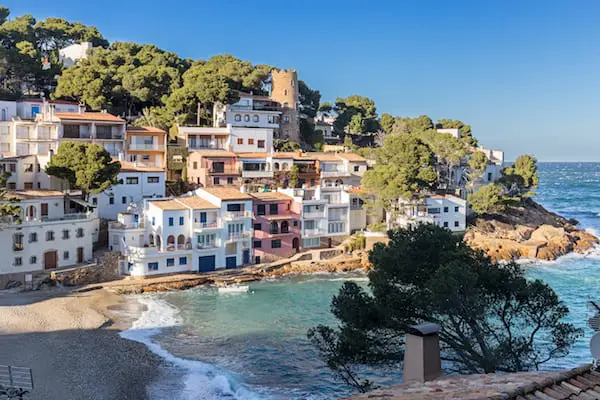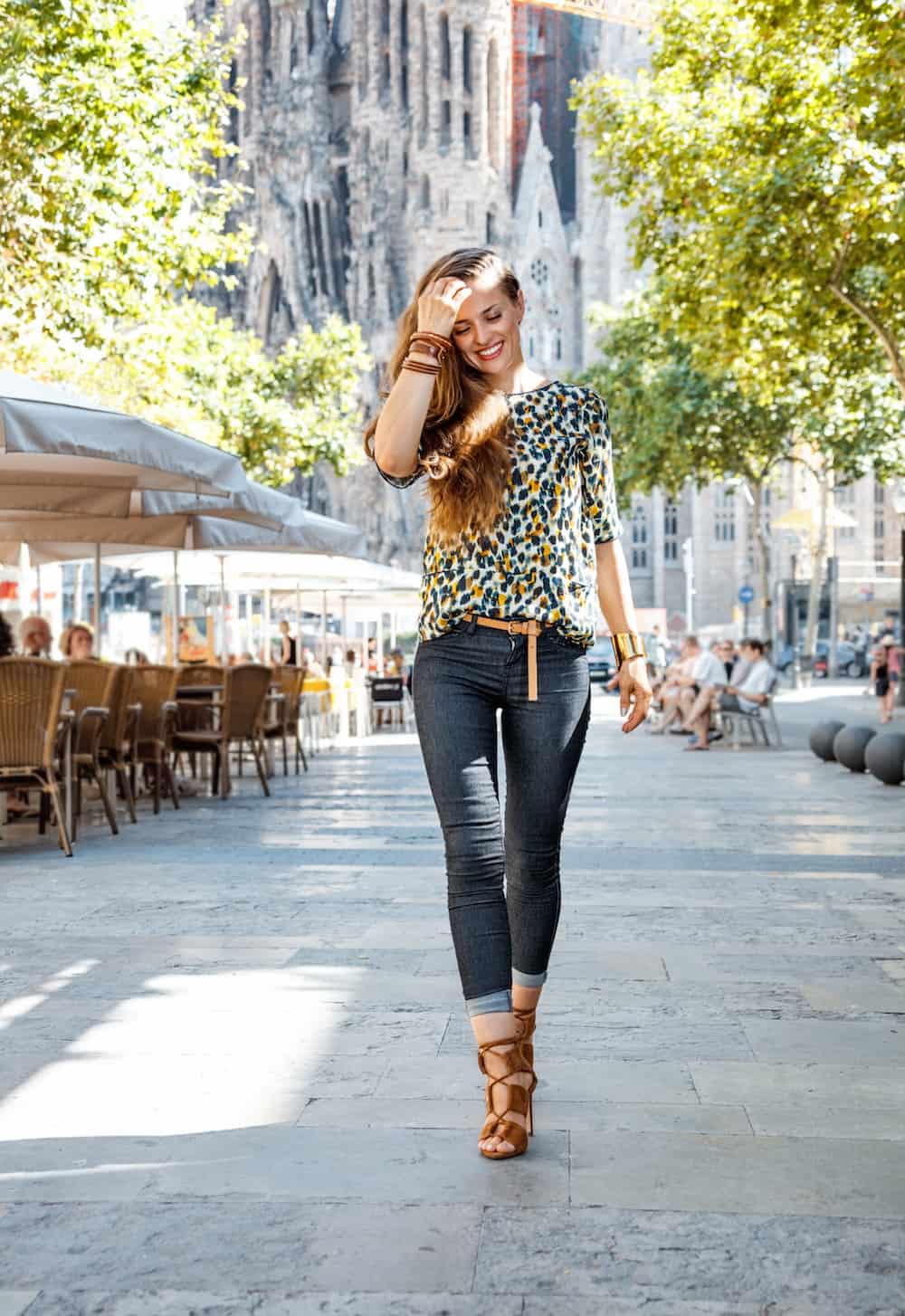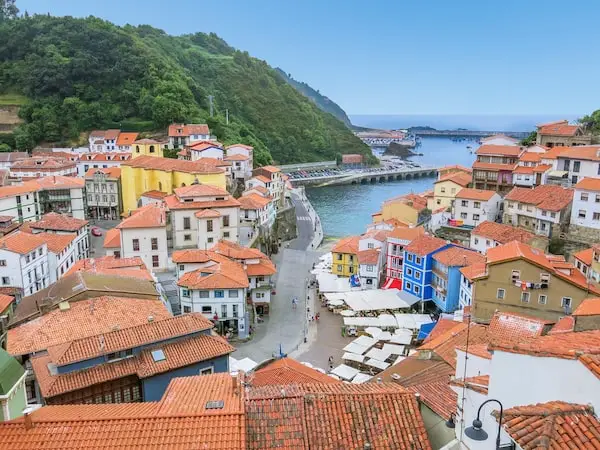*This site contains affiliate links, which means I receive a commission when you buy. See my full disclosure.
From the vibrant Flamenco dresses to the iconic matador ensembles, these styles tell stories of history and heritage.
Beautiful Traditional Clothing: Spain Folk Fashion
Traje de Flamenco
If there’s any traditional Spanish dress that you know of, it’s the beautiful, decorative traje de flamenco. The Andalusian traje de flamenco, a quintessential garment of Spain’s cultural heritage, originated in the passionate region of Andalusia. It’s also called a traje de gitana or flamenco dress.
It’s historically worn by Flamenco dancers, and this attire traces its roots to the late 19th century. Interestingly enough, it’s influenced by Romani, Moorish, and Spanish cultures. It’s easily recognizable, from its voluminous ruffled skirts, fitted bodices, and vibrant colors. It’s very expressive, so the music and passionate emotions that comes with it really shows off that boisterous spirit of Flamenco music and dance!
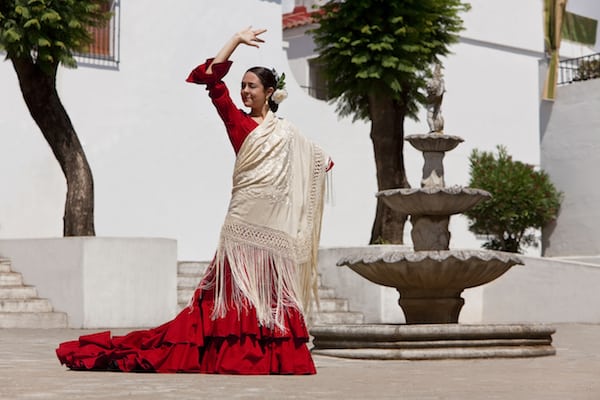
Over the years, the traje de flamenco has evolved in style and design, incorporating modern elements while retaining its traditional essence. Today, it’s worn during Flamenco performances, regional festivals, and celebrations, capturing the heart of Spanish identity. This iconic dress is also known by various names, such as “bata de cola” due to the extended train that adds drama to the dancer’s movements.
Ensemble of a Torero
The traditional clothing of a torero, the brave bullfighter in Spain, has deep historical roots that date back to the 18th century. Evolving from practical attire for the bullring, it has become an emblem of courage and tradition.
The torero’s ensemble usually includes the elaborate traje de luces, or suit of lights, adorned with intricate gold and silver embroidery. It symbolizes the fighter’s bravery and honor. The bolero jacket and snug-fitting trousers facilitate agility and grace during the bullfight. Over the years, this attire has retained its classic elegance while incorporating modern design elements.
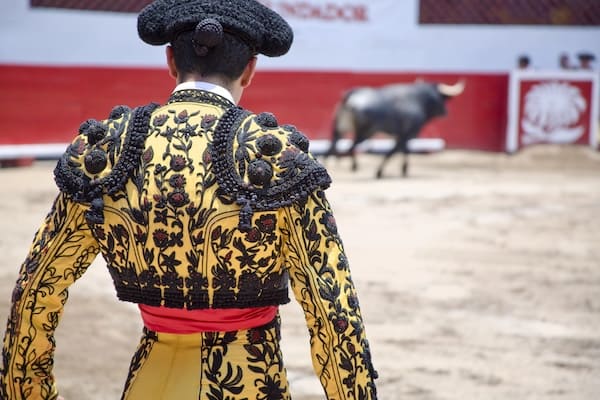
Today, toreros wear their distinctive attire during bullfights, infusing each performance with a blend of timeless tradition and personal style. This outfit is also known as the “matador’s suit” or “suit of lights,” embodying the courage and artistry of bullfighting in Spanish culture.
The torero who wears the traditional attire holds a complex and multi-faceted attitude. On one hand, the torero embodies a sense of fearlessness and bravado. The elaborate traje de luces, adorned with shimmering embroidery, symbolizes their readiness to face the bull in the arena, even in the face of danger. This attire becomes a visual representation of their courage and determination, reflecting the torero’s commitment to their craft and the art of bullfighting.
At the same time, the torero’s attitude is marked by a deep respect for the tradition and ritual of bullfighting. The outfit’s historic significance connects them to a lineage of bullfighters who have faced the same challenge throughout generations. The torero’s demeanor often reflects a mix of solemnity and focus, recognizing the gravity of their role in the bullfight, where they engage in a dance of life and death with the bull. This combination of confidence, respect, and a keen awareness of the risks involved defines the attitude of the torero who dons the traditional clothing.
Basque Country’s Traditional Clothing
Basque traditional clothing, originating in the resilient Basque Country of Spain, traces its origins to the region’s rural history and vibrant culture. This attire, often referred to as “traje vasco” or “Basque costume,” signifies the Basque people’s strong connection to their heritage.
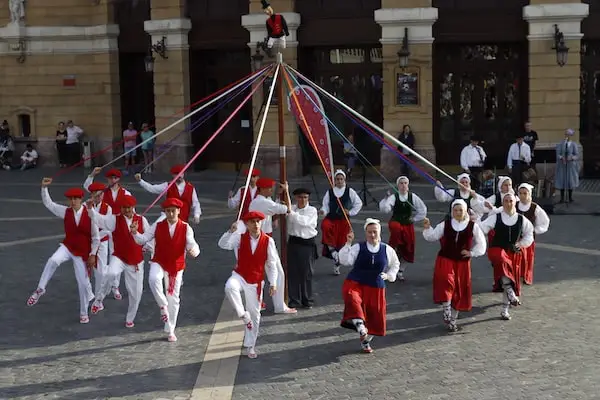
Women’s attire features pristine white blouses intricately adorned with lacework, complemented by colorful and voluminous skirts. The Basque beret, known as the txapela, not only protects from the elements but also embodies individual and communal pride. Over time, this attire has evolved while preserving its cultural essence, adapting to modern preferences. Basque traditional clothing is donned during festive events, dances like the Soka-dantza, and celebrations, highlighting the Basque people’s enduring spirit and tradition-rich identity.
Chulapos and Chulapas of Madrid
Chulapos and Chulapas are traditional outfits associated with Madrid’s festivals and celebrations.
Chulapos are men who wear a characteristic outfit that reflects the working-class heritage of Madrid. Their attire includes high-waisted, tight-fitting trousers known as “zaragüelles,” often accompanied by a short jacket, typically in dark colors. These jackets might feature intricate embroidery and button details. Completing the ensemble is a flat, round cap called the “chambergo” or “montera,” which adds a touch of authenticity to the look. Chulapos also wear traditional espadrilles or other types of footwear, keeping comfort and practicality in mind.
Chulapas (Women): Chulapas, the women who don the traditional clothing, wear outfits that evoke a sense of festive elegance. The centerpiece is the brightly colored dress, often with polka dots or floral patterns, which exudes a cheerful and lively atmosphere. The dress features a fitted bodice, a flared skirt, and is typically accompanied by an embroidered apron, adding a touch of intricate craftsmanship.
Women’s hair is elaborately styled, often adorned with colorful flowers or a decorative comb, enhancing the overall charm of the ensemble. Accessories like shawls and fans complete the look, reflecting the attention to detail and the festive spirit of Madrid’s traditions.
Castilian Charro Attire
The traditional clothing of the Castilian charro in Spain, known as traje charro, is a homage to the region’s equestrian heritage and rural roots. Originating in the Castile region, this attire has its beginnings in the practical clothing worn by ranchers and horsemen. The ensemble features a wide-brimmed hat called the sombrero cordobés, symbolizing protection from the elements. The charro suit includes elaborately embroidered jackets with intricate motifs, worn over a white shirt. Tight-fitting trousers, a wide sash, and leather accessories complete the look. This attire signifies the charro’s connection to horse culture, as well as their skill and bravery. Over the years, the traje charro has maintained its authenticity while incorporating modern elements. Today, it’s worn during festive events, rodeos, and celebrations, embodying the Castilian spirit and tradition. It’s also known as the “charro outfit” or “charro costume,” a visual representation of Castile’s rich equestrian heritage.
Charro Attire for Men:
The charro attire for men is characterized by its elegant and rugged appearance. It includes a wide-brimmed hat, known as the “sombrero cordobés,” which provides shade and protection. The outfit typically comprises a white shirt with elaborate embroidery, often showcasing intricate patterns and designs. The jacket, known as the chaquetilla, is similarly adorned with detailed embroidery on the cuffs and lapels. A wide sash, known as the faja is wrapped around the waist, adding a touch of color and flair. The trousers are tight-fitting and often dark in color, with leather accessories like a belt and boots completing the ensemble.
Charra Attire for Women:
Charra attire for women is equally captivating, combining elements of tradition and femininity. The dress typically features a fitted bodice with intricate embroidery and decorative elements. The skirt flares out gracefully, often with embroidered designs along the hem. A shawl, known as the rebozo, may be draped over the shoulders, adding elegance and practicality. Women often wear a colorful apron with embroidery, complementing the overall look. Accessories like jewelry, combs, and flowers in the hair enhance the traditional charm of the ensemble.
Both charro attire for men and women pays tribute to the Castilian heritage, celebrating equestrian skills and rural traditions. These outfits are worn during festivals, rodeos, and special events, providing a visual representation of the deep connection between the people of Castile and their rich history.
Galician Traditional Clothing
The traditional clothing of Galicia, Spain, reflects the region’s Celtic heritage and its enduring connection to its unique landscape. Known for its resilience against the cold and rainy climate, Galician attire, often referred to as “traxe galego,” originated as practical clothing for rural life. This attire includes the use of heavy woolen fabrics for warmth, with a key piece being the distinctive cape, known as the “manta galega.” The cape is often adorned with intricate patterns and embroidery, symbolizing both functionality and cultural identity. Over the years, Galician clothing has evolved while preserving its essence, adapting to contemporary aesthetics. Today, this attire is proudly worn during festivals, cultural events, and traditional celebrations, reminding the Galician people of their deep roots and the rugged beauty of their homeland. It’s also referred to as “Galician costume” or “Galician dress,” representing the region’s enduring traditions and resilience.
Attire for Men: Galician traditional clothing for men is characterized by its warmth and functionality. Men often wear woolen trousers known as “bragas,” which are wide and comfortable for movement. A white shirt is typically worn, accompanied by a vest or jacket, often made from wool, to provide insulation against the cold. A sash or belt is worn around the waist for both practical and aesthetic purposes. However, one of the most distinctive elements of Galician male attire is the cape, known as the “manta galega.” This heavy woolen cape, often adorned with intricate patterns and embroidery, offers protection against the region’s chilly and damp weather while showcasing the Galician people’s artistic skills.
Attire for Women: Galician traditional clothing for women also prioritizes comfort and warmth. Women wear long, layered skirts made from wool or other heavy fabrics to shield against the cold. A white blouse is commonly worn, with an apron adding a touch of decoration and practicality. Similar to men, Galician women also wear a distinctive cape, the “manta galega,” which can be draped over the shoulders for warmth and protection. Women’s attire is often completed with shawls, headscarves, and other accessories that both serve functional purposes and add to the overall aesthetic.
Both men’s and women’s traditional Galician attire pays tribute to the region’s history and culture while providing practical solutions to the demands of the environment. While these clothes are no longer part of everyday wear, they are proudly worn during cultural festivals, regional celebrations, and events that honor Galicia’s rich heritage.
Catalan Sardana Attire
The Sardana dance in Catalonia is marked by its circle formation and communal spirit. While it looks simple to do, I hear it’s very complicated!
The traditional clothing associated with the Catalan Sardana dance reflects the communal spirit and unity inherent in the dance.
Characterized by its simplicity and elegance, Sardana clothing typically consists of white garments, including a flowing skirt for women and white pants for men. Women wear a white blouse adorned with delicate lace, while men don a white shirt.
The sash, known as faixa, is a unifying element, draped around the waist and shoulders, symbolizing solidarity among participants. The Sardana dance, performed in a circle, embodies community harmony. Today, this attire is worn during Sardana performances and regional festivals, underscoring the Catalan people’s commitment to their culture and collective identity. The clothing is also referred to as “Sardana dress” or “Catalan dance attire,” encapsulating the essence of the dance’s celebratory and unifying spirit.
Attire for Men: Men’s Sardana attire includes white pants and a white shirt, embodying the purity and unity of the dance. The shirt is usually long-sleeved and buttoned up, while the pants are often wide-legged for ease of movement. Over the shirt, men wear a wide sash known as the “faixa,” which is wrapped around the waist and over the shoulders in a specific manner. The faixa serves as both a functional element and a symbol of togetherness among the dancers. Traditional black espadrilles or comfortable shoes complete the look, allowing for graceful footwork during the dance.
Attire for Women: Women’s Sardana attire is equally graceful and aligned with the dance’s aesthetic. Women typically wear a long, flowing white skirt that allows for elegant movement during the dance. Over the skirt, they don a white blouse, often adorned with lace or other delicate embellishments, reflecting the feminine charm. As with the men, women wear the “faixa,” which is draped over the shoulders and tied at the waist, creating a cohesive and harmonious appearance. Comfortable shoes ensure that women can gracefully participate in the Sardana’s circle formation.
Both men and women wear this attire with a sense of pride and unity during Sardana performances and regional celebrations. The simplicity of the clothing emphasizes the focus on the dance itself and the collective experience of sharing in Catalonia’s cultural heritage.
Valencian Fallera Attire
The traditional clothing of Valencia, Spain, is deeply entwined with the vibrant and festive atmosphere of the Valencian Fallas festival. Originating in this very region, this attire has its roots in the celebrations that honor Saint Joseph. The clothing typically includes ornate silk dresses adorned with intricate embroidery, reflecting the region’s craftsmanship and artistry.
Elaborate hairstyles, often featuring the “cofia,” a distinctive headdress, are adorned with flowers, enhancing the visual impact of the ensemble. This attire, a captivating blend of history and creativity, symbolizes Valencia’s cultural pride and artistic flair. Over time, while retaining its essence, the traditional clothing has adapted to modern sensibilities. Today, it is worn during the Fallas festival, a spectacular display of Valencian identity and heritage. This clothing is also known as “Fallas attire” or “Valencian festival dress,”.
Attire for Men:
Men’s traditional clothing for the Valencian Fallas festival is characterized by elegance and a touch of formality. Men typically wear a white shirt, often adorned with intricate embroidery along the front and cuffs. The trousers are dark in color, providing a classic contrast to the white shirt. Completing the look is a sash worn around the waist, adding a pop of color and flair. Comfortable shoes allow for movement during the festivities. This ensemble reflects the pride and respect that the Valencian people have for their cultural heritage.
Attire for Women:
Women’s traditional clothing for the Fallas festival is a visual feast of colors and details. The dress is often made from luxurious silk fabric and is adorned with elaborate embroidery, showcasing the region’s artistic craftsmanship. The dress typically has a fitted bodice and a flared skirt, creating an elegant silhouette. A key element of the ensemble is the “cofia,” a headdress that features intricate lace and often supports a cascade of flowers, adding a touch of femininity and beauty. Accessories like earrings and a fan complete the look, enhancing the overall charm of the attire.
Both men and women wear their traditional Valencian Fallas clothing with pride during the festival, creating a captivating visual spectacle that celebrates Valencia’s culture and history.
Canarian Traditional Attire
The traditional clothing of the Canary Islands is a vibrant reflection of its diverse cultural heritage, combining influences from Spanish, African, and Latin American cultures. Due to the islands’ warm climate, lightweight fabrics like linen and cotton are predominantly used, making the attire comfortable for daily wear. Each of the islands has its own traditional costumes, using fabrics as silk, linen, and wool, materials that are fantastic for that warm weather. All the islands include, Tenerife, Fuerteventura, Gran Canaria, Lanzarote, La Palma, La Gomera, El Hierro, and La Graciosa.
The traditional female Tenerife costume consists of a loom-made wool skirt, with a red or black base depending on the area with longitudinal colored strips. The shirt is made of the same material and has an embroidered bodice, black or red, over it. On his head he wears a hat with a scarf.
Attire for Men:
The traditional male costume of Tenerife is composed of embroidered linen leggings, black wool pants, a red sash and an embroidered white cotton or linen shirt. The vest is also made of wool.
Attire for Women:
The traditional clothing of Tenerife is deeply rooted in its history and culture, and wearing it is a way for the people to celebrate and honor their heritage, especially during festivals, cultural events, and religious ceremonies. It’s a beautiful display of color, tradition, and craftsmanship, showcasing the island’s unique identity.
Overall, the traditional clothing of the Canary Islands is a beautiful representation of the region’s cultural blend, offering a glimpse into its rich history and unique heritage.

